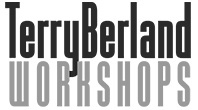Written for Casting Networks News by Terry Berland @berlandcasting.
As a casting director, I communicate directly with the ad agency’s creative team: the decision-makers responsible for booking talent. This team determines the style of read they’re looking for and provides direction accordingly. However, the real key to a great performance isn’t just in the given direction, it can be found in the script itself.
When I am given voiceover direction from the creative team I look it over and change the words to best suit the results I am looking for from the talent’s read. I look beyond the written direction given to me. The reads that stand out are beyond a warm non-announcer. I can best describe the reads that stand out as the reads with a point of view.
I am going to share my process with you.
Trust that all the answers to making the best performance choices can be found within the script. Here are four key elements to analyze a script to make distinct choices to enhance your reads.
Insights: Lessons from Terry Berland, CSA
- Use visual descriptors and product context to shape your performance tone (e.g., intimate for tight shots, upbeat for fast food ads).
- Align your voice with the product’s image (e.g., refined for luxury cars, trustworthy for financial services).
- Highlight words like “trust” or “action” in your delivery to enhance the emotional impact.
If This is a TV Read, Look at the Visual Cues in the Script
Think of the visuals as the principal character and your voice as the supporting character in the spot.
If you have access to visuals, take the time to analyze them. They will help you understand the overall tone of the piece. Here are some common visual cues and what they might suggest for your read:
- Tight shot: Calls for a more intimate and personal read.
- Peaceful neighborhood with manicured lawns: Suggests a warm, reassuring and calm tone.
- Rolling hills: Evokes a folksy, serene and comforting feel.
- Bright colors and quick shots: Indicates a bright, positive, high-energy read.
- Puppies, children, family and friendship scenes: Calls for a warm and joyful delivery.
- Military themes: This suggests an inspirational and bold read.
Look at the Written Descriptions Between the Voiceover Words
Even when visuals are not provided, the script often includes written descriptions that serve the same purpose. These descriptions offer insights into tone and mood. Pay attention to them, as they provide the same types of hints that visuals do.
- City rooftop party with New York skyline in the background. Friends laughing and talking: Suggests friendly and warm tones.
- A hammer comes down and slams a slab of cement: Your read would be strong and straightforward.
- Bubbles are floating by as the child’s face is being face-painted at the fairground: Your read could be rather intimate with a magical feel to it.
Pay Attention to the Product
The product itself offers strong clues about the required tone and pacing of the read. Consider these general guidelines:
- Fast food: Upbeat, bright and quick-tempoed.
- Luxury restaurants (dim lighting, elegant settings): Slower-paced, softer, more intimate tone.
- Luxury cars with lush interiors: Calls for a refined read.
- Speeding cars and high-action visuals: Indicates a strong, energetic and focused delivery.
- Retail stores (bright, lively, bouncy music): Requires a bright and friendly tone.
- Financial institutions: Needs a reassuring, trustworthy delivery. Most institutions suggest that your needs will be individually treated. That is a direct suggestion to sound warm and relatable.
- Shampoo, cosmetics and beauty products: A softer, smoother, more “cosmetic” tone enhances the appeal. If the product has upbeat music and a bouncier feel, pay attention as it is suggested your read be positive and upbeat.
Find Cue Words in the Script
Certain words in the script should guide your choices in tone and delivery. Key cue words include:
- “Trust,” “confident,” “assured” and “safe”: Calls for a warm, reassuring, steady tone.
- “Take action now,” “go now,” “limited time”: Suggests a feeling of enthusiasm.
- “Hero,” “empowered” and “bold”: Suggests a strong, motivational read.
Final Thoughts
Think of each script as selling with an emotional feel. The entire spot is complete except for the voice that will “top off” that emotional feel. I listen to hundreds of reads per role. Mastering the skill of choosing the right emotional feel will set you apart in the competitive world of voiceover work.
If you want to sharpen up your voice-over technique, follow this link to Terry Berland’s Voice-Over workshops.









